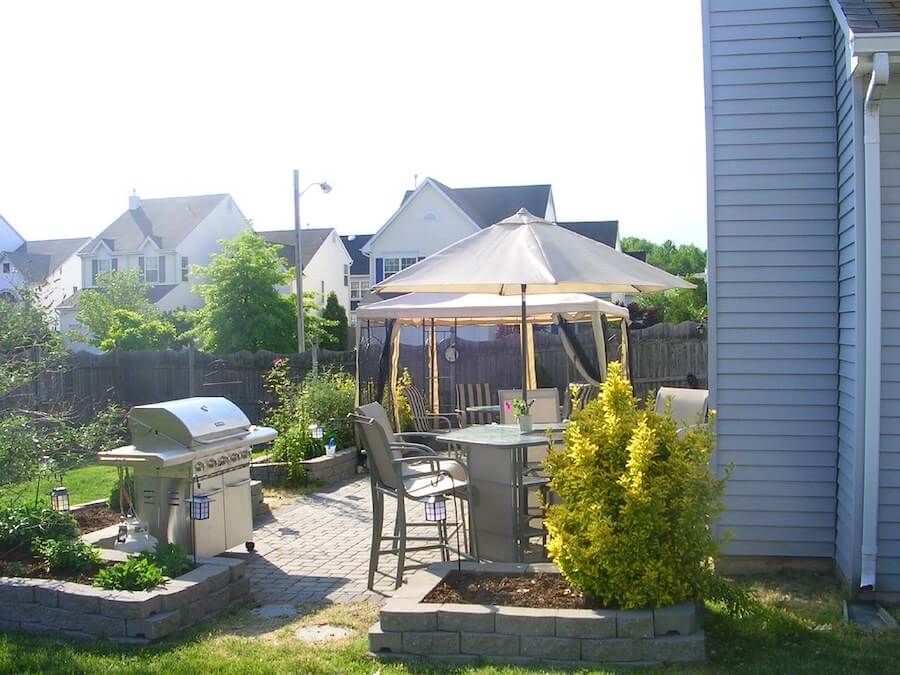Your outdoor patio should be the place where you can wipe away all your stress and enjoy your time. But when it gets hot, your entertainment will turn out to be a nightmare.
Why is my patio so hot? How can you solve this problem? We will cover everything you need to know in this complete guide. Let’s refer to it!
Table of Contents
Why Is My Patio So Hot?
When the weather gets hot, it will affect your patio. How hot it depends on its material, color, and location. The heat annoys you more if you walk barefoot.
Material
Some materials can stay cool better than others. Most concrete patio products run warmer than natural stone would.
The kind of stone, thickness, color, and surface roughness are all elements that might affect how cool your patio feels underfoot.
Please note that the characteristics of concrete patios might vary significantly. So, it’s not always true that natural stone feels cooler than concrete.
Sticking with the generalizations, natural wood materials often maintain a lower temperature than composites, although age, maintenance, and the use of natural colors and stains may change it.
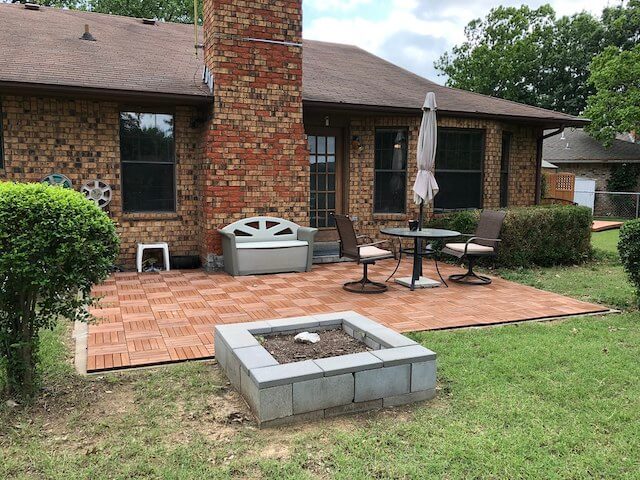
Color
The color of a specific patio greatly influences how hot it will become when the sun hits it. This rule applies to all wooden and stone patios.
To be more specific, darker-colored patios may typically feel hotter to bare feet when subjected to direct sunshine.
So if you want to soothe the effect of a heated patio, go for lighter colors.
Location
The placement of the decking setup might also impact how hot the surface may feel. A rooftop deck can withstand much more solar heat than a deck installed on a building terrace.
External elements play a role here. If you build your patio in a place with more vegetation and wind, it won’t be too hot during the summer.
Feet effect
On the decking area, whether in a play area, pool surround, interactive fountain, or pedestrian walkway, people often have bare feet. However, this habit worsens the heat effect.
Your feet will directly contact the heated surface. As a result, you will feel hotter when walking barefoot around your patio.
How To Cool Down A Hot Patio?
Your patio may get hot for several reasons. You need to address the problem so that the patio works as it should. Here are some possible solutions.
Add a roof
Your patio might have a full or partial roof installed by a home improvement expert. You may significantly improve shadow in certain areas using this approach.
On hot days, shade may make you feel up to fifteen degrees cooler, even though it cannot change the temperature of the air around you. This notable difference gives you more shaded space to unwind.
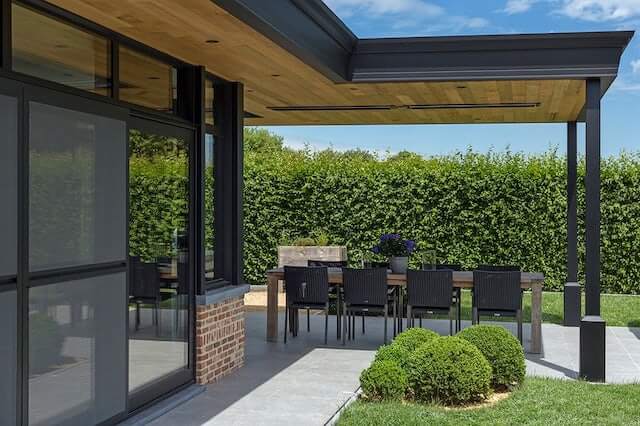
Build a covered pergola
Another solution for escaping the summer heat is to build a covered pergola if you have access to a concrete or brick patio.
You can hide from the outside crowd in the shade offered by this shelter when the temperature increases. Don’t forget to bring a cold drink and a portable fan.
Your body can feel the change, yet you’ll still enjoy being out there. The covered pergolas can perform a good job of protecting you and other equipment on the patio.
Install overhead fans
Fans can circulate the air in your patio area, which is a pleasant relief. But air circulation alone doesn’t always result in air cooling.
A heated airflow can soon lead to an uncomfortable situation. Fans can effectively do their job if the air is not too hot.
You can install overhead fans. They may help keep the pavement cooler for you and your guests on a hot summer day.
Installing a cooling system may be preferable if a fan is inadequate on the hottest summer days.
A misting system can send a little mist into the area. There must be a continuous water supply and electricity for it to operate.
Swamp and evaporative coolers are essentially outdoor air conditioning devices. They circulate cool air while pulling in warm air.
Fog systems, also known as “foggers,” generate a fog-like atmosphere that helps to cool concrete by using high-pressure nozzles and pumps with stainless steel piping.
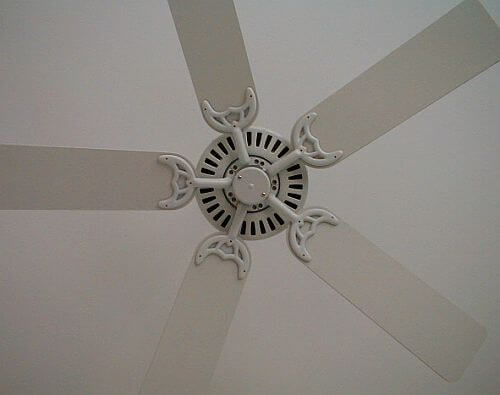
Construct an enclosure
A covered room or patio enclosure can help if you like to relax outside but don’t like the insects or the sun attacking your area.
You may construct a new patio or add a screened area to an existing one. Even when it’s rainy, you can have a good time thanks to the enclosure.
Additionally, the adjustable screens offer a lovely view and the freedom to open or shut the area when necessary.
This room might serve as extra living space, raising the cost of your property.
Cover the surface with a rug
A sturdy outdoor rug is a lifesaver to protect delicate bare feet when your patio gets extremely heated.
To keep your rug in good condition all year long, be sure to buy an all-weather product and store it during the winter.
Add an umbrella
Stay cool with patio umbrellas, whether you’re sitting by the pool or eating outside. They shield you from the sun’s rays to take advantage of the wonderful outdoors.
Buy a mobile, free-standing patio umbrella. Alternatively, choose one that will fit the center of the patio table where you eat and host guests.
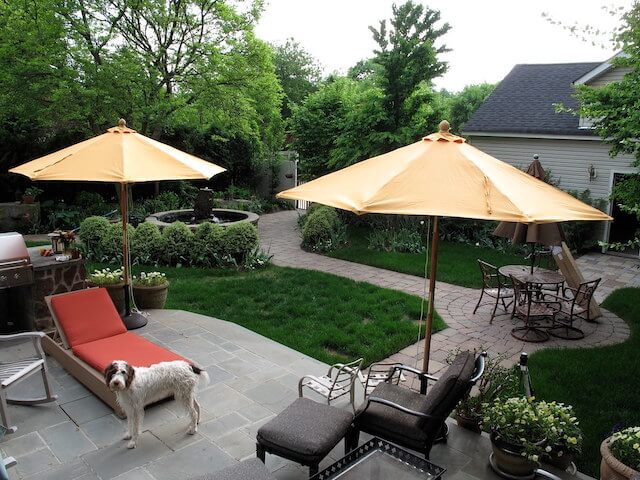
Use a retractable awning.
There are situations when you don’t want your patio backyard to have a permanent feature. A removable awning is an excellent choice here.
You can use these convenient features on hot summer days and store them on chilly days when you prefer the sunshine.
Add a coating
Painting the concrete patio a light color can aid in reflecting the sun’s rays.
The paint can also keep the structure cooler if you have poured dark-colored concrete that is collecting a lot of heat.
White or a color that closely resembles it, such as off-white, would be the ideal color to change how hot your patio will be.
Use light-colored concrete
As aforementioned, darker colors absorb all of the light’s wavelengths, even those our eyes cannot detect.
The heat generated directly from those wavelengths then gets trapped in concrete.
On the other hand, white is a hue at the other end of the spectrum that doesn’t reflect any of the light’s spectra. Since it is so reflective, it won’t really absorb any heat.
You can find concrete in various colors. Manufacturers adjust the mix with coloring, which changes the final color of the concrete when it has dried and hardened.
Patios are outside areas with a lot of foot movement, even without coverings or protection like socks and shoes.
It is advisable to use a concrete mix with a light color for this area to prevent terrible burns for everybody.
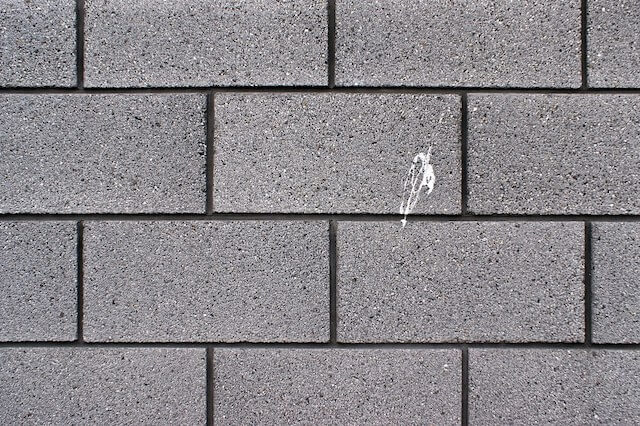
FAQs
1. Do evaporative coolers work outside?
Yes. Thanks to the coolers, you can stay cool and comfortable outdoors even in the hottest summer heat.
2. How do you cool a concrete slab?
You should do all your ability to minimize the amount of sunshine the concrete is exposed to. As examples, consider the following:
- Construct a pergola to protect your roof.
- Place vegetation on flat roofs.
- Build a trellis to enclose the roof.
- Your roof should have insulation to reduce heat absorption.
3. Does wetting concrete cool it down?
Yes. Wetting down the surface brings down the temperature and raises the humidity of the air.
This method lessens the water evaporation from the concrete surface during placement and lowers the concrete’s temperature.
4. What stone does not get hot in the sun?
Sandstone and limestone have the best performance in this case. They don’t transmit heat and are resistant to cracking.
5. What color repels heat the most?
White is the only hue that resists heat because white surfaces reflect visible light wavelengths. Hence, it would be best to use materials in white to reduce the heat it may collect.
The hue that absorbs the most visible light is black. Other colors that make your patio hotter are blue, green, indigo, violet, red, orange, and yellow. Avoid them at all costs when constructing outdoor structures.
Conclusion
Your patio gets hot because of the weather. The amount of heat it absorbs depends on the material’s characteristics. However, you can try the recommended solutions to improve the situation.
Hopefully, you will find this article helpful. For any further information, please feel free to ask. Thank you for stopping by, and see you in the next post!

